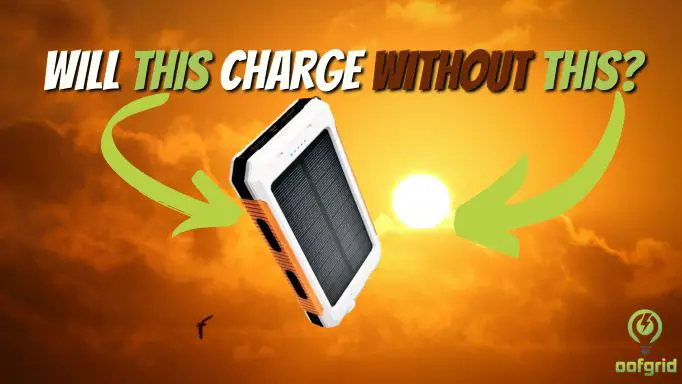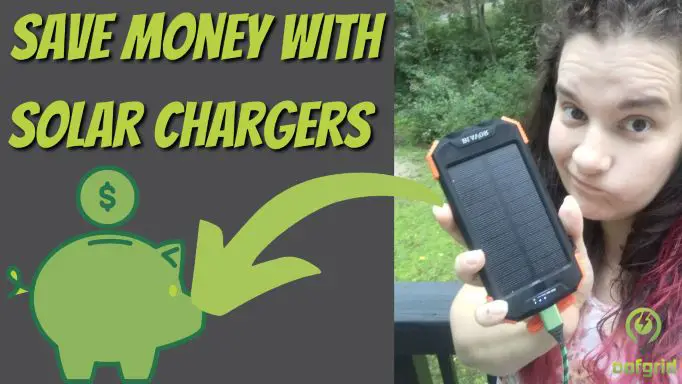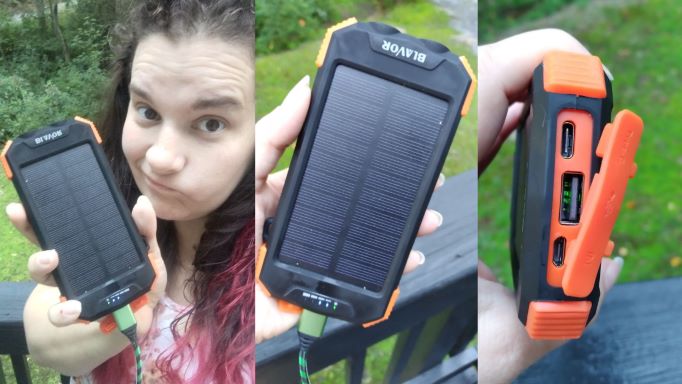The amount of technology we rely on in everyday life makes portable energy sources essential. We can power our cellphones and laptops with lithium-ion batteries, run flashlights from alkaline ones, and many of our watches depend on batteries constructed with silver oxide.
Even though car batteries seem more old-fashioned than the above battery types, they are still some of the most powerful batteries in the world. In fact, most vehicles used for transport would not be able to run without these batteries.
The vast majority of people, however, are not experts when it comes to choosing batteries. With all the different types of batteries that are available, it can be confusing to keep track of which are best for which uses.
A good example of a battery type that is not well-known is a deep-cycle battery. We would bet that at least half of those reading this do not know what this battery is or when to use it (but don’t worry, we will be explaining this to you later)! A regular lead battery, on the other hand, is available almost everywhere.
In this article, we will explain the main differences between these two batteries and when to use both types.
Contents
What is a Regular Lead Battery?
Regular lead batteries were invented by the French physicist Gaston Planté in 1859. Today, lead batteries are the primary battery type used to power everyday automobiles. This includes cars, SUVs, and trucks.
Usage of regular lead batteries is widespread due to their cheap price and wide availability.
Another pro of regular lead batteries is their long-life span, especially when you compare it to the lifespan of deep-cycle batteries. This is because regular lead batteries are never drained completely, resulting in a longer battery life.
Even though these batteries are cheap upfront and last a long time, there are disadvantages to using lead batteries. These include their high maintenance costs and low energy-weight proportion. These batteries are also not very environmentally friendly.
How are Lead Batteries Made?
Lead batteries are made from pure lead. As many as 2,000 pounds of pure lead ingots are melted, stirred, and atomized into small droplets that are then combined with oxygen to form the highly reactive compound lead oxide.
Lead can be melted easily, shaped, and cooled quickly without fracturing. This makes it perfect for the grids that go inside a battery. Once charged, lead-acid batteries store energy in a chemical form that can be released on demand as electricity.
A car’s 12-volt battery is composed of six 2-volt cells. Each cell contains a positively charged plate or electrode made from lead and a negatively charged one.
Both plates are submerged in an electrolyte solution of sulfuric acid and water. Doing this starts the ignition that causes the acid to react with the lead. This creates an electrochemical reaction that produces a current which generates the power to start your car.
Anywhere from 90 to 100 grids must fit flawlessly inside each battery.
The lead oxide powder is then turned into a paste and pressed into the holes of the grids. This forms the battery plate. Inside the flash dryer, a percentage of moisture is removed from the plates with super-hot air. The finished plates are then stacked.
The batteries are finally filled with acid and charged with each battery containing close to 20 pounds of lead.
How do Regular Lead Batteries Work?
Lead batteries work by providing a quick and intense supply of energy in order to instantly start and power a vehicle.
Types of Regular Lead-Acid Batteries
Even though we are discussing the difference between a regular lead battery and a deep-cycle one, it’s important to note that lead batteries are also subdivided into various types depending on their utilization.
The following are the main types of regular lead-acid batteries:
1. Flooded lead-acid batteries
A flooded battery with lead-acid chemistry is the most common in the industry. You simply add distilled water to the cells on a regular basis. You also need to perform periodic equalizations.
We advise you to keep a hydrometer at reach so that you can frequently check the specific gravity of the electrolyte in the batteries.
When a flooded lead-acid battery is charged under certain conditions, it can produce hydrogen gas. So, for that reason, most lead-acid batteries need to be stored in a sealed enclosure, or at least where there is an active ventilation system, to keep the harmful fumes away from you.
2. Sealed lead acid batteries
Sealed lead-acid batteries are sometimes referred to as valve-regulated lead-acid batteries. These consist of AGM (Absorbed Glass Mat) and Gel batteries. Unlike flooded ones, no maintenance is needed. You do not have to worry about watering, equalizing, charging, or checking specific gravity.
Many AGM manufacturers and producers do recommend a periodic conditioning charge, but there’s no specific maintenance required for an AGM. This is a significant advantage and a main reason why buyers prefer AGM over flooded batteries.
Of course, there are some drawbacks to these batteries. The primary one is that AGM batteries may not last as long as their flooded counterparts. This is mostly because you can’t do anything to sustain them and boost their efficiency if the power supply starts to get low.
What are Deep-Cycle Batteries?
Deep-cycle batteries are stored energy units that can supply power for an extended period of time. The chemical reactions that take place provide a very strong and long-lasting electricity and power output.
Deep-cycle batteries are also lead-acid. Unlike regular batteries, they are supposed to be discharged and recharged frequently. They are designed in such a way that the cycle, recharge, and discharge are all done smoothly without any disruptions.
The goal of these batteries is to provide a sustained supply of power until almost 80% is discharged, at which time, one can continue with the cycle of recharging.
This feature is where deep-cycle batteries stand out. In providing a more prolonged energy supply, you save both energy and money.
Deep-cycle batteries are not the best option for all vehicles, especially larger vehicles like trucks. They are perfect, however, for recreational vehicles like boats and golf carts. They can even be used in solar panels, making them an eco-friendly option.
How are Deep-Cycle Batteries Made?
Deep-cycle batteries range from 2-volts to 48-volts. Their power is generated by a group of lead plates coated in lead oxides and acid, just like regular lead batteries. The melting machine pours molten lead into grid-shaped molds. Water circulating through the molds then hardens the metal in just five seconds.
The grid machine casts two types of grids: negatives and positives. The grids are wrapped with chemical pastes that contain lead oxide and acid. The positives get one plate formulation and the negatives a different one.
The grids are now termed “plates.” These plates are then stacked into cases, alternating positive and negative ones. These are then dropped into sulfuric acid tanks to charge. The lead-oxide and acid gained from the charge are then stored inside the batteries.
After charging for 24 to 72 hours, depending on the model, the plates go inside a machine that washes away the acid residue, which would corrode the metal if left behind.
A machine will then wrap each positive grid with a glass mat-an, which is an insulation material similar to fiberglass. They then get packed in a plastic “envelope”. These coverings protect the plate from short-circuits.
The plates are then stacked again with alternate charges. This time though, each stack contains a specific number, from 5 to 33 plates, depending on the battery model. Each stack is now called a cell. As mentioned above, each cell contains 2 volts of electricity.
Each plate has a tab, and a robotic machine cleans the tabs with a wire brush and a chemical solution called a flask. Next, it dips the tabs in molten tin, which will improve the bond when they sort the tabs together. This process is repeated once more in order to clean the tabs again.
These same tabs are dropped in a mold containing molten lead for a robust cell bonding procedure. This procedure casts two lead posts, two on the positive side and two on the negative side. These posts will connect the cells and result in the required voltage.
The next step involves forming the batteries by putting the cells into various cases. Testing is done to make sure every cell functions impeccably. This also determines whether the cell’s position is correct or not. Lastly, the open mouths are sealed.
To test the seals, air is pumped into the cells and soapy water is brushed over the cover. The formation of bubbles during this step would suggest that the sealing is not done correctly.
After assembling all the parts, the final case is put over the cover and the batteries are ready to use. In some cases, extra sulfuric acid is added to keep the lead charged.
Types of Deep-Cycle Batteries
The following are the types of deep-cycle batteries available:
1. Flooded deep-cycle batteries
These types of batteries have a low initial cost and are widely available. However, deep-cycle flooded batteries are quite hazardous and contain sulfuric-acid solutions.
Due to the internal chemical reactions that take place and the heating process during charging, these batteries inherently lose water. This water must be replaced through regular maintenance.
If this maintenance does not happen, damage to the batteries will occur. This will lead to off gassing resulting in corrosion and damage to equipment.
2. Sealed gel deep-cycle batteries
Falling under the VRLA category, sealed gel deep-cycle batteries are non-spillable and maintenance-free, resulting in minimal health precautions. You can even ship these batteries as non-hazardous goods.
However, these batteries are available only in limited footprints and have a lesser lifespan than other battery types due to the use of thinner plates. They also need a longer charging time than other types of deep-cycle batteries.
3. Sealed AGM deep-cycle battery
AGM batteries use thinner plate technology. The glass matte separators use a soft plastic material that fits between the plates.
It’s the combination of these glass mat separators and the electrolytes that are absorbed into them that gives the products their name.
AGM batteries have mobilized electrolytes. This helps if you overcharge an AGM battery and create a dry spot on the mat. In that case, there is a wicking action in the glass mat material that’s going to ensure the battery can recover from this damage.
When to Use Regular Lead Batteries vs. Deep-Cycle Batteries
As mentioned, these batteries are both mainly used to power vehicles. Which one you decide to use will depend on the vehicle being used and its purpose.
Regular lead batteries are best used for everyday automobiles as well as larger vehicles like trucks and vans. Deep-cycle batteries are more fitting for smaller recreational vehicles.
Deep-cycle batteries can also be used to power material-handling vehicles such as forklifts, as well as to power renewable energy sources. Regular lead batteries would not be suitable for those purposes though.
Final Thoughts
As you can see there are several options when it comes to the type of battery and some differences in the way they are made.
We hope this guide helps you to fully understand the difference between a Deep-Cycle Battery and a Regular Battery.











